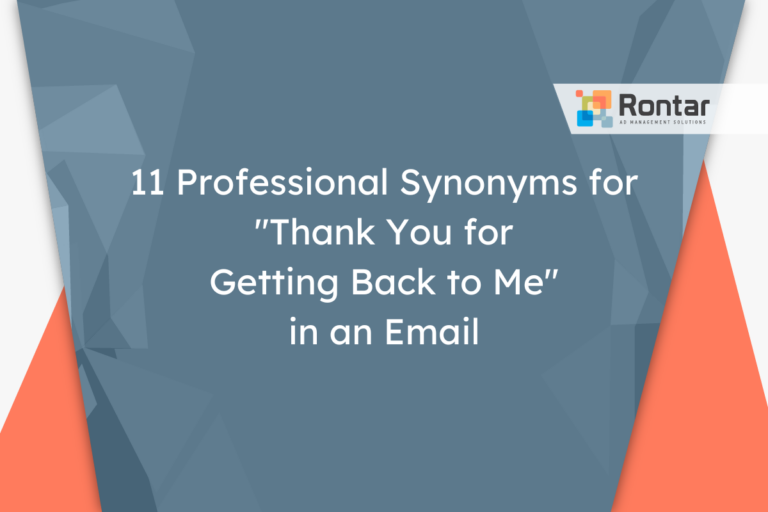Why Email Acknowledgments Matter
In today's fast-paced digital world, acknowledging emails promptly and professionally is crucial. It confirms receipt, shows respect for the sender's time, and sets the tone for effective communication.
This guide provides 14 different phrases to acknowledge an email, complete with usage scenarios and examples, so you can choose the best response for every situation and audience. Whether you're communicating with colleagues, clients, or supervisors, these phrases will enhance your professional image.
1. Thank you for your email
This is a polite and formal acknowledgment, ideal for emails from clients, senior colleagues, or any professional contact. It expresses appreciation and ensures the sender their message is being taken seriously.
Use this phrase to show gratitude and readiness to engage with the content of the message. Example: 'Thank you for your email. I have reviewed your proposal and will respond by the end of the week.'
2. I have received your email
This is formal and straightforward, suitable for confirming receipt without providing an immediate response. Appropriate for peers, supervisors, or external parties when an acknowledgment is necessary, but a detailed reply will follow later.
This assures the sender their message hasn't gone unnoticed. Example: 'I have received your email. I will review the attached documents and get back to you with any questions.'
3. Thank you
A versatile acknowledgment for both formal and informal settings. Suitable for brief replies, expressing gratitude quickly without detail. Works well with familiar colleagues or in less formal environments.
It's an effective way to show appreciation without lengthy messages. Example: 'Thank you for the update.'
4. I’ll take a look, thanks
This strikes a balance between informal and polite, perfect for messages with colleagues or in friendly environments. Acknowledges receipt and indicates review. Ideal for situations where a follow-up action is required.
Example: 'I'll take a look, thanks. I'll let you know if I have any questions.'
5. Noted
A straightforward, somewhat informal acknowledgment. Best for interactions within teams or with colleagues you have a casual relationship with. Use it when brevity is appreciated, and your tone is understood.
Example: 'Noted. I will implement the changes by the deadline.'
6. Understood
Primarily used in informal settings, conveying a clear acknowledgment. Suitable for quick exchanges with team members or responding to instructions from superiors. It communicates that the message is clear and no further explanation is needed.
Example: 'Understood. I will proceed as instructed.'
7. Received
A very informal one-word acknowledgment. Reserve it for communications where brevity is critical, and the relationship permits succinctness. Effectively used within team communications or quick updates.
Be wary of using it in formal or sensitive correspondence. Example: 'Received.'
8. Your email was well received
More formal and detailed, suitable for professional settings where you want to convey a thorough acknowledgment. Particularly useful with new clients, external partners, or anyone you're building rapport with.
The addition of 'well' suggests appreciation. Example: 'Your email was well received. We appreciate the detailed proposal.'
“A well-crafted email acknowledgment demonstrates respect and professionalism, setting the stage for positive interactions.
Email Etiquette Expert
Enhance Your Email Skills
Explore these interactive elements to refine your communication
Quiz: Test Your Acknowledgment Knowledge
Assess your understanding of email acknowledgment best practices with a quick quiz.
Downloadable Email Templates
Get pre-written acknowledgment templates for various professional scenarios.
9. Email received
Simpler and less formal than the previous option. Strikes a good balance between acknowledgment and formality, versatile for a range of situations, from internal team communications to client emails.
A polished way of confirming that you have seen their message without going into detail. Example: 'Email received. I'll be in touch shortly.'
10. Well received
Polite and formal, suitable for interactions where more formality is needed. Great for confirming receipt to new clients, senior management, or external contacts. 'Well' suggests you value the information.
Example: 'Well received. Thank you for providing this update.'
11. Got it
Very informal; use with people you have a casual or comfortable relationship with. Perfect for quick replies among team members or regular colleagues. Use it in contexts where informality won't be misinterpreted.
Example: 'Got it. I will handle this.'
12. Acknowledged
Both formal and informal, adaptable to a variety of situations. Short, suggesting the message was received and its content noted. Suitable for peer communications and upward reporting, especially when the thread is technical or task-based.
Example: 'Acknowledged. The report will be submitted by the deadline.'
13. Copy that
Informal, with a casual, conversational feel. Mainly for quick exchanges where both parties are comfortable with each other, often in team environments. Communicates clear understanding.
Avoid it in formal communications. Example: 'Copy that. I'll get started on it.'
14. Well noted
Formal, conveying importance. Appropriate for correspondences requiring detailed follow-up, or when dealing with external or senior contacts. Indicates that the email content has been received with the attention it merits.
Example: 'Well noted. We will take these points into consideration for the upcoming meeting.'
Conclusion Final Thoughts
Choosing the right acknowledgment phrase can significantly improve communication. By matching the tone to the situation and the recipient, you can keep interactions smooth and professional.
Use these 14 options as a guide to ensure your email responses are always appropriate. Consistent and effective email acknowledgments will contribute to stronger professional relationships and more efficient workflow.